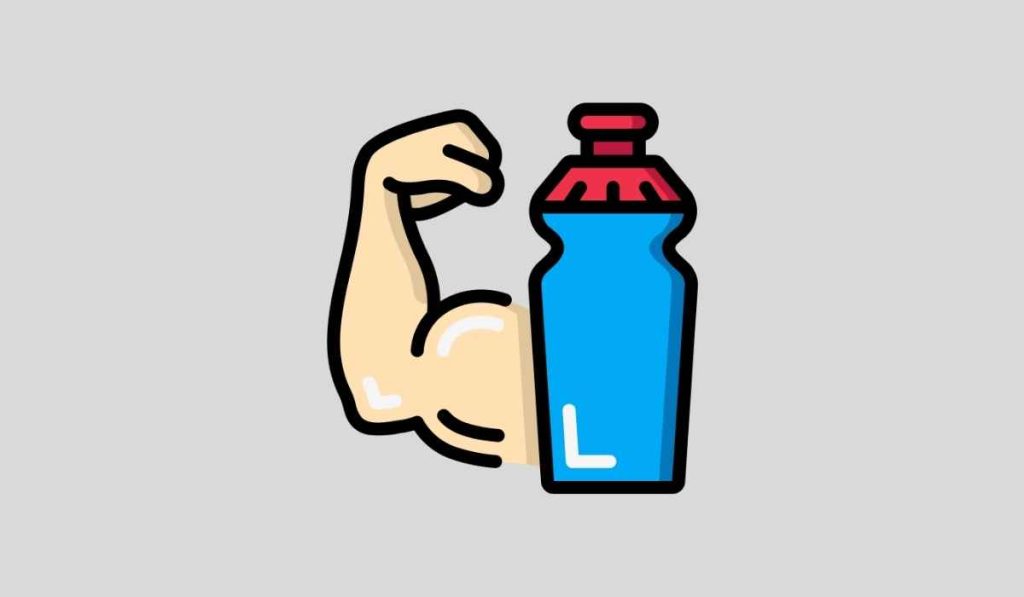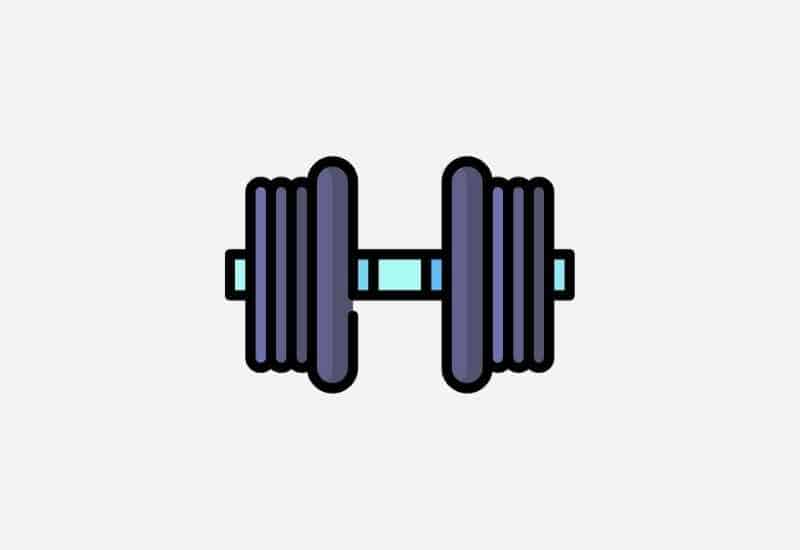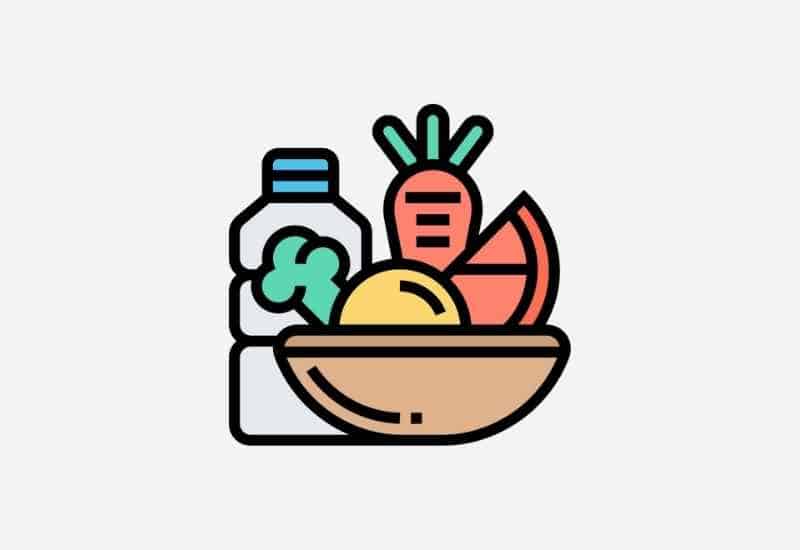Looking for a healthy and lean way to pack on more muscle? Here’s what you need to know about clean bulking, including, pros, cons, best foods to clean bulk, and more.

Getting ready to pack on the extra pounds of muscle? Bulking is a critical first step in the process of buffing up, but how you do it can be just as important as how long you do it—as well as how you cut afterward.
In many of the articles that talk about how to bulk, you’ll hear the terms “clean bulking” and “dirty bulking”.
Below, we’ll dive into what exactly clean bulking is, the pros and cons, the best foods to eat, and some handy tips to help you do it right.
By the end, you’ll know exactly what you need to do to bulk up eating the right way!
(Note: Want to learn more about the bulking/cutting process? Check out our articles on cutting vs bulking and how to cut after bulking to find out what comes next once you’re done buffing up.)
What is Clean Bulking?
The term “clean bulking” refers to eating clean while still consuming enough calories to bulk up.
When attempting to bulk, you’ll typically eat an additional 350 to 700 or even 1000 calories per day (depending on how much exercise for bulking you’re doing and what your bulking goals are).
You could easily get those calories from unhealthy, high-fat foods—think donuts, pizza, ice cream, potato chips, and so on—but the point of clean bulking is to stick with only “clean”, healthy foods.
This includes anything that is nutrient-dense, low in extra calories, low in sugar and fats, and rich in macro and micronutrients.
Some people track calories when clean bulking, while others just increase their caloric intake by adding more healthy food to their daily diet.
The Pros of Clean Bulking
Clean bulking is popular for good reason!
There are a lot of things that make bulking up by eating clean a good idea:
? Excellent nutrition.
The whole point of eating clean is to consume a balance of nutrients, including plenty of protein, complex carbohydrates, and healthy fats, as well as vitamins, minerals, antioxidants, and fiber.
When clean bulking, you end up eating a lot of nutrient-rich foods that improve your health, digestion, and organ function, in addition to packing on the weight you want to turn into muscle.
Compared to dirty bulking, which has a free-for-all approach that prioritizes excess calories at all costs, you are going to eat a whole lot better with clean bulking.
It’s a way of prioritizing good health and a balanced diet while still adding extra muscle mass.
? More lean muscle.
With clean bulking, you eat a lot of the foods that pack on the lean muscle mass—including whole grains, nuts, seeds, lean proteins, and veggies—but don’t contribute to significant fat gain.
You’ll still gain those extra pounds but actually have an easier time turning them into muscle because of the food you’re eating.

? Faster and easier cutting phase
When the time comes to switch from bulking to cutting, you’ll find it’s significantly easier to make the switch because you’ve been eating clean.
Eating “dirty” typically means you consume a lot of sugar and fats, all foods that can be very addictive and hard to quit. When the time comes to cut, you’ll struggle more to clean up your diet and limit food intake to only the healthy options.
Related: D-Bal Review: Pros, Cons and What You Should Know Before Buying
But with clean eating, you’ve been eating right all along—all that’s changing now is the amount you eat, which is easy to scale up or down according to your goals.
? Better energy production.
Because you’re eating clean, you’re providing your body with a good balance of micro and macronutrients that regulate energy levels.
No excess of sugar and fats means you won’t have to worry about energy spikes and crashes, or that sluggish feeling you get when eating a lot of low-quality junk food.
At the end of the day, you’ll walk away from your clean bulking efforts feeling better and in better overall health because of the balanced diet and nutrient-rich foods you’ve been eating!
The Cons of Clean Bulking
Sadly, there are a few downsides of clean bulking (which is why “dirty bulking” is still such a popular option).
These include:
Slower gains.
Typically, clean bulking involves fewer calories (350-500), and the foods you eat won’t be turned into fat/body mass as quickly as low-quality junk food.
They’ll boost your metabolism, which means your body will be more effective at burning the calories you eat for energy rather than storing them for fat.
You’re more likely to hit a plateau with your bulking efforts because of the way that clean foods impact your metabolic function.
You may have to eat even more food on a clean bulking diet to continue gaining weight.
Strict diet.
With dirty bulking, you can eat anything you want, all day long.
Clean bulking, on the other hand, involves a fairly strict diet that adheres to a specific macronutrient balance and regulating portion sizing.

This means that you have to stick to your meal plan, with only minimal deviation on occasion to include some treats or “extras”.
This can be a bit limiting and challenging for those who prefer to be more flexible with their eating.
Expensive.
Compare the price of quality “clean” foods with the cost of low-quality junk food, and you can see a huge difference.
Even just the simple difference between lean proteins (like chicken breast) and fattier proteins (like burgers, cheese, ham, or chicken legs) is significant. It can become quite expensive to bulk up by eating a clean diet.
None of these cons are enough to stop you from clean bulking, simply something to be aware of as you go into it.
Best Foods for Clean Bulking
When planning on clean bulking, there are a number of foods that should be the main source of nutrition in your healthy, balanced diet:
? Lean proteins. These should be the main focus of your clean bulking diet! Chicken, beef, pork, and turkey are all critical, particularly the leaner cuts (with less fat). Add in eggs, fish, seafood, Greek yogurt, cottage cheese, reduced-fat cheese, eggs, egg whites, tofu, and tempeh to max out the protein while keeping fat intake low.
? Whole grains. A lot of your daily calorie intake should come from whole grains, such as quinoa, brown rice, millet, barley, oats, and even whole wheat flour. These provide a concentrated dose of nutrient-rich carbohydrates your body can use for energy during your workouts.
? Other high-quality carbohydrates. This includes potatoes and sweet potatoes, corn, whole grain pasta, and even some white rice.
? Healthy plant-based fats. These fats are dense in calories and can help you hit your daily caloric intake targets, but won’t contribute to health problems. On the contrary, they can improve your metabolism, brain function, and cardiovascular health. Olive oil, coconut oil, fish oil, nut butters, and avocadoes are all excellent options.
? Nuts and seeds. Chia seeds, hemp seeds, flax seeds, walnuts, peanuts, almonds, and cashews are just a few of the fat-rich nuts and seeds you should be including in your clean bulking diet.
? Legumes. Beans, chickpeas, and lentils are all rich in protein and fiber, and a critical component of a clean bulking diet.
? Fruits and veggies. Many fruits are high in sugar, but small portions of these fruits are excellent additions to your clean bulking diet. Vegetables should be consumed raw and cooked lightly to maximize nutrient intake.
☕ Beverages. Coffee and tea are both excellent additions to your clean bulking diet, provided you avoid excess sugar and fat intake when drinking them (no added whipped cream or sugary syrups).
Water, seltzer, club soda, and kombucha should be the primary source of your daily fluid intake (along with the liquid in fruits and veggies). When you want something extra tasty, consider adding a diet soda (but don’t make it a regular habit!).
Make sure you’re eating these clean foods with a proper balance of macronutrients, and you can expect to see real results.
Tips for Clean Bulking Like a Pro
? Be smart with timing your eating.
Eat around your workouts—easily digestible meals beforehand that give you energy, and protein-rich, higher-fat meals afterward that keep your energy levels steady for hours and ensure post-workout recovery.
? Avoid the junk food.
Tempting as it is to take the quick and easy route through dirty bulking, going the clean route will benefit your health in the long term. Stay away from junk food and stick with the healthy, nutrient-rich options I listed above.
? Search for variety.
Unless you’re the kind of person who prefers to eat the same food every day, you may find that a clean bulking diet can get a bit tiresome, given your limited options.
Explore all your options and try out new foods, new recipes, and new cooking styles. Get creative with your menus and you’ll enjoy the clean bulking process a lot more.
? Count calories and track macros.
The best way to ensure you’re eating right is to track everything you eat. Use whatever smartphone app suits you best, and input everything you eat in the day.
Watch your macros and make sure you’re getting the right balance—typically 40% protein, 25 to 30% fats, and 30 to 35% carbohydrates.
(Using a food journal and calorie tracker is almost essential with clean bulking—the feedback these tools provide keep you honest about how much food you are ingesting.)
? Hit the gym hard.
You’ve got all this extra energy available, so it’s important that you utilize it and get your body accustomed to building muscle rather than storing fat.
To do that, you’ve got to hit the gym extra hard during your bulking phase, working with high volumes and incorporating enough cardio to keep you from gaining excess fat.
What supplements should I take for clean bulking?
There are TONS of supplements out there for bulking.
The main ones you should incorporate include whey protein, creatine, a multi-vitamin, and BCAAs for increased performance during training (and enhanced recovery).
The main supplements you will want to avoid on a clean bulk are mass gainers which are basically calorie bombs designed for people trying to put on a lot of mindless weight in not a lot of time.
There are also some excellent bulking stacks that are built using all-natural ingredients (the Crazy Bulk is my favorite) that can help you put on the muscle while adding minimal fat.
The Bottom Line
Clean bulking is definitely the smartest approach to packing on the extra pounds of muscle—whether you’re preparing for a competition, trying to go up a weight class, or just want to look bigger.
By focusing entirely on eating healthy, nutrient-rich foods, you can bulk up without putting your health at risk.
Use the advice above to help you plan a diet, meal plan, and workout regimen that enables massive muscle gains without adding unnecessary fat mass.
You’ll come out the other side of the bulking phase ready to cut and strip down to your absolute best-looking body.
Best of all, you’ll find the transition from healthy eating to bulking to cutting to healthy maintenance is so much easier!